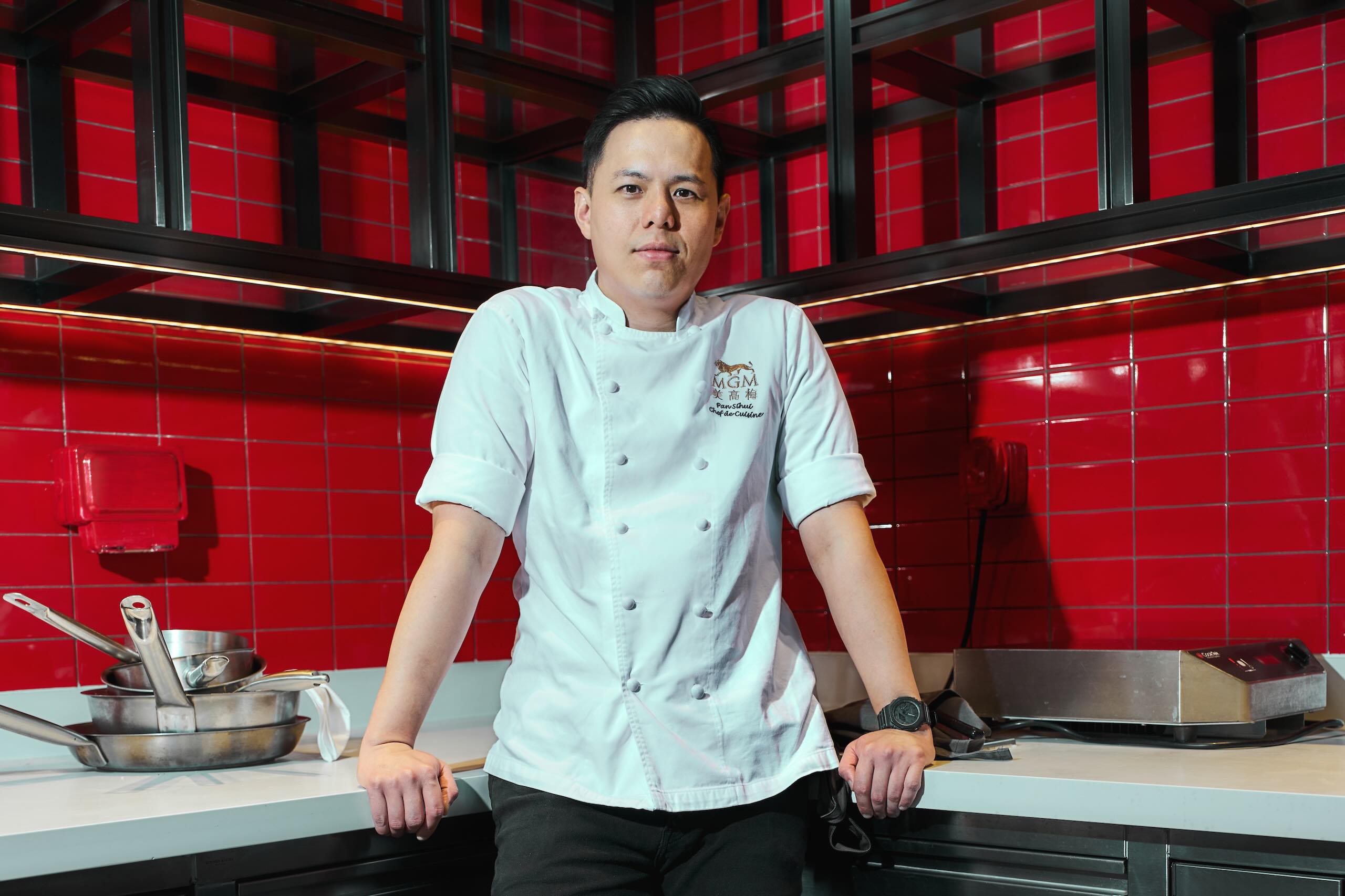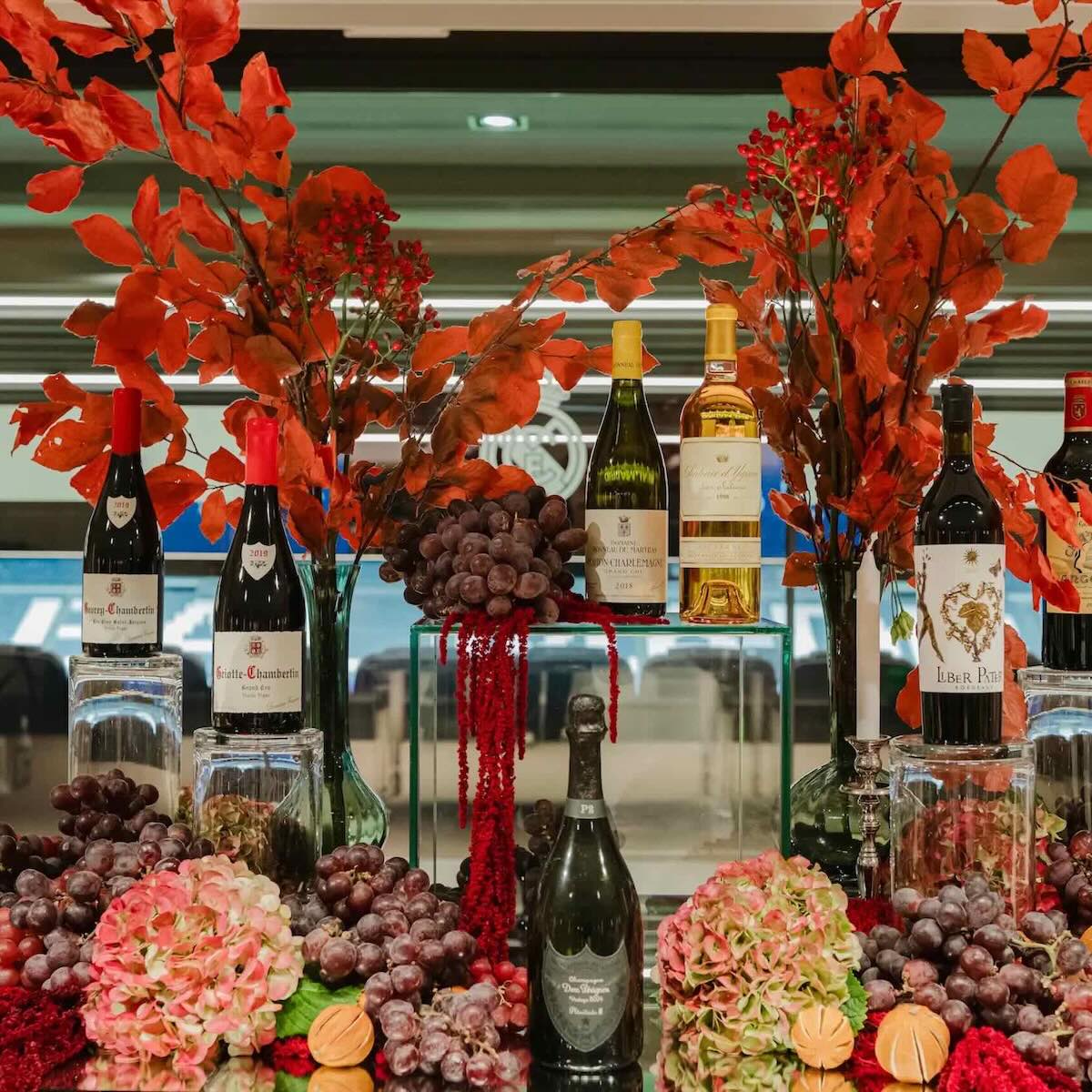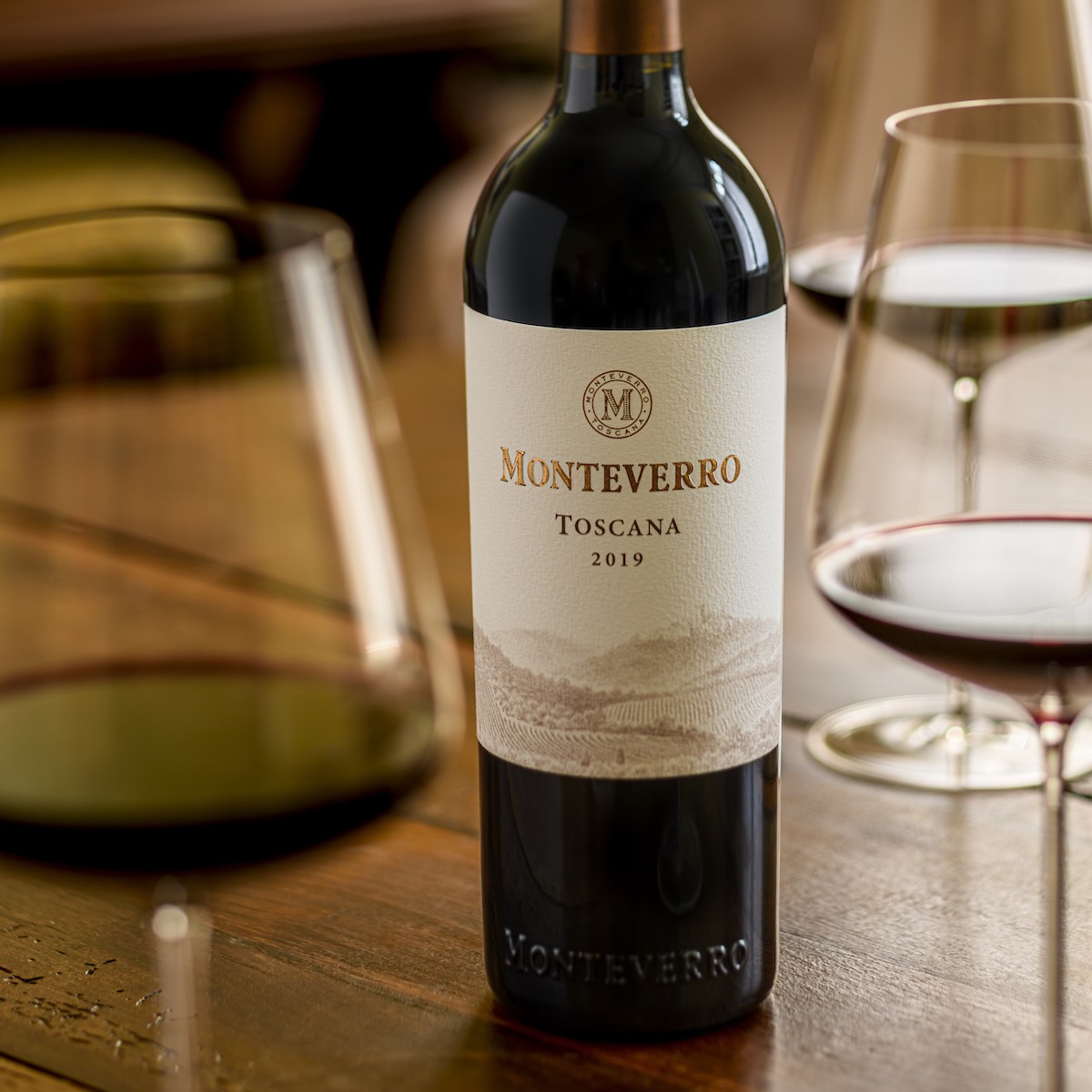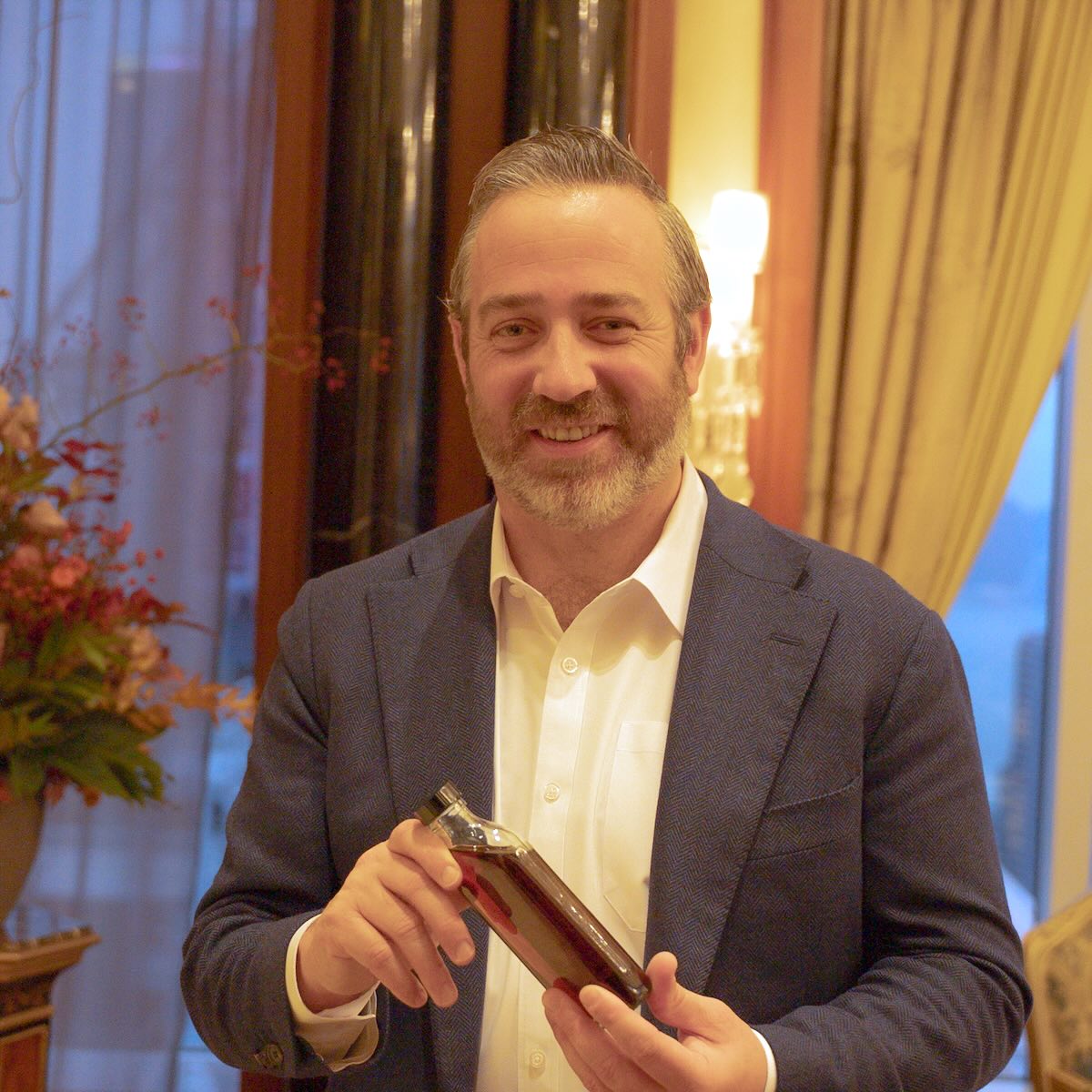This story is part of a series of features covering MGM x RR1HK Culinary Masters Macau 2025, hosted at MGM COTAI in Macau on 7–8 June 2025.
At MGM COTAI, Pan Sihui, the chef de cuisine of Aji, is at the forefront of a culinary revolution that marries Southeast Asian flavours with Western techniques. It’s made him an enticing magnet, attracting connoisseurs and critics in equal measure, fascinated by what he plates with such confident ease. Aji at MGM COTAI serves an inspired dining experience, showcasing a refreshed menu that embodies the evolution of Pan’s innovative concept, “Asian Bistronomy.” His contemporary interpretation of authentic Asian flavours, enhanced by distinctly Western culinary techniques, invites guests on a remarkable epicurean journey amidst the dramatic backdrop of The Spectacle at MGM COTAI.
Hand-picked to be a part of the gilded roster of chefs for MGM x RR1HK Culinary Masters Macau 2025, Pan brings youthful zest to a panel of maestros who are all set to create a series of Michelin-star-studded plates for a gala dinner like no other. How will his culinary approach segue into the menu? One will have to wait as the countdown to the event begins.
“Bistronomy” denotes a culinary style that marries the casual ambience of a bistro with gastronomic artistry. Where else can you find smoked salmon with pickled beet and mango turmeric, or the Aji lobster Thermidor with salted egg and sudachi Comté cheese? Ingredients born worlds apart meet on Pan’s signature plates for a unity of flavour. Aji’s redefined approach to modern bistro cuisine features an array of meticulously crafted dishes, each reflecting the extensive global culinary expertise of the loquacious Pan.
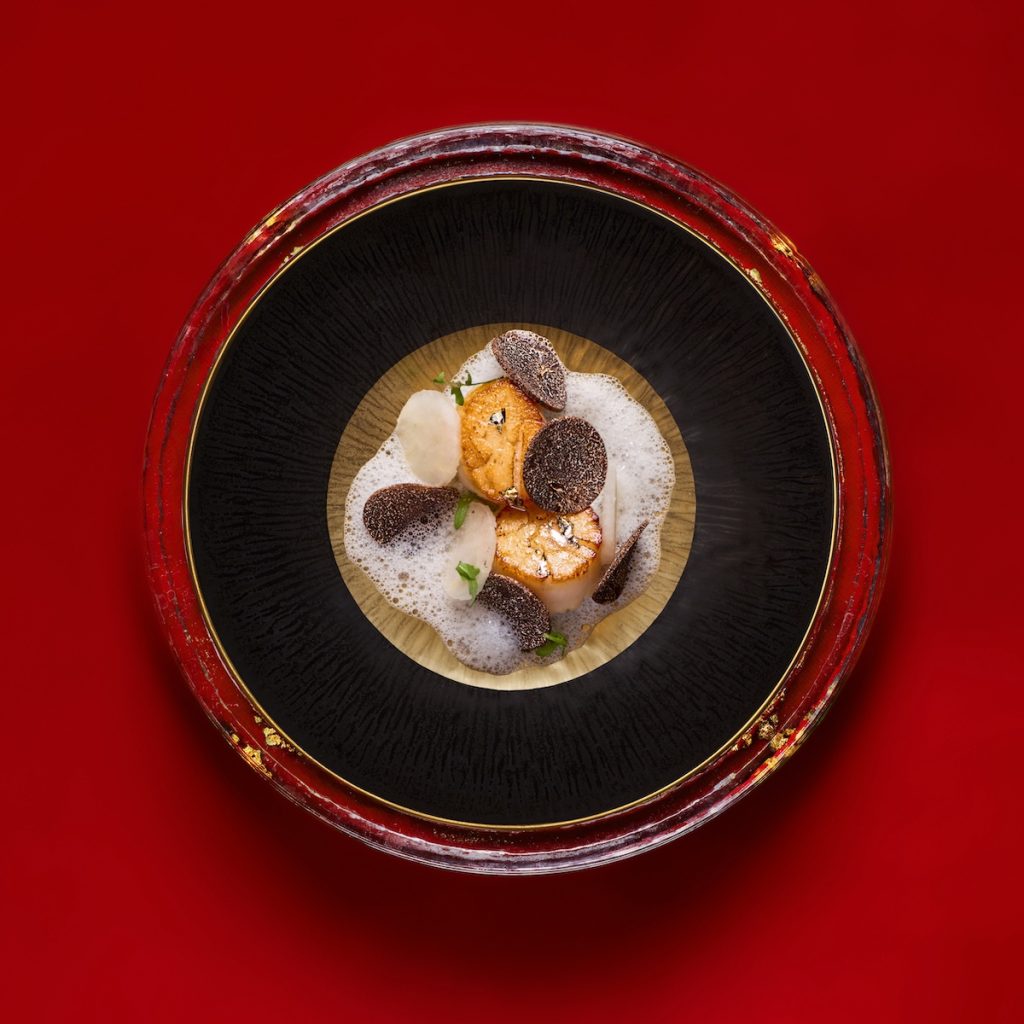
Hailing from Singapore, Pan possesses an innate understanding of the ingredients and flavours intrinsic to Southeast Asian cultures. (Pan-Asian—it sort of writes itself, doesn’t it?) A graduate of the haloed Culinary Institute of America, he adeptly fuses Western cooking methods with Asian elements, offering diners a distinctive experience. His accolades and multiple awards affirm his status as a leading culinary figure in the region.
In a surprisingly candid conversation with Robb Report Hong Kong, Pan reflects on his journey, inspirations, and the philosophy that drives his innovative cuisine.
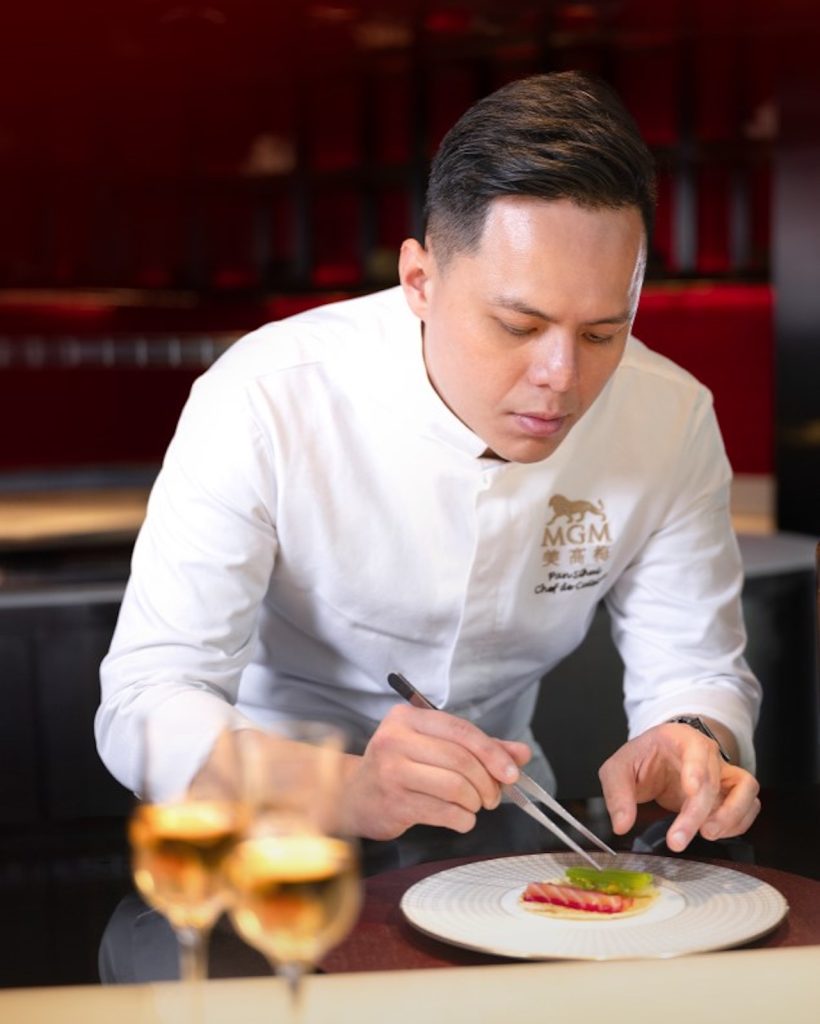
What inspired you to blend Southeast Asian flavours with Western cooking techniques?
I think it’s just representative of my own heritage, being a home-grown Singaporean, trained in Western cooking. Travelling to so many places very naturally [brought about] the style of my own cooking and my own flavour profiles. We have been exposed to different flavours, different races, and different cultures since young and working in many places around the world has built up my confidence in my own culinary beliefs and my own practice.
Does this bother traditionalists?
I think yes. But I have my own core beliefs, and I just chose to work on what I felt was right. It wasn’t always easy. I didn’t always convince everyone. But I certainly believe in this creative approach, and I believe that my style of cuisine speaks for itself.
How did your time at the Culinary Institute of America influence your culinary style? Did traditional Asian dishes get a touch of Western influence?
Graduating from the Culinary Institute of America was one of the most amazing experiences. It really built the core of my cooking basis. [I learnt] everything from culinary skills to waste management, managing people, [and how to] design the menu. It’s where I really learned the basics from scratch. I think you build a really awesome foundation. And I would really recommend young chefs thinking of getting a culinary degree to consider that school.
When we were doing Asian dishes at that time, because of the geographical location, they couldn’t get authentic ingredients, and they’d have to come up with alternatives to cater to the creation of the menu. It shows how chefs should be working on the spot, thinking about how we can play around with ingredients and also different techniques while still trying to keep the authenticity of what we want to showcase to the customers. I think that’s the important thing—problem-solving. Sometimes you can get certain ingredients or sometimes different customers have different preferences. Cooking is really “on the spot.”
Where do you draw your personal culinary inspiration from?
My mum was the main inspiration. When I was growing up, she was not a great cook, so it was her cooking that gave me the passion to try and find out what goes on in the kitchen. I think I took some initiative to survive. [laughs] I wanted to try and see, “Can I make any food taste good?” And that kept me going. I enjoyed myself when I was working in the kitchen, cooking meals for my family. And then I suddenly felt that maybe this might be a career for me, actually. Yeah, it was survival mode.
How does your “Asian Bistronomy” concept redefine modern bistro cuisine?
When we talk about “Asian Bistronomy,” it’s a place that you go to that I feel is casual, but they can still get gastronomy out of the bistro setting. You don’t have to have white tablecloths or people wearing suits and ties. You can dress smart casual but still enjoy good food that has certain standards and flavours. It’s very layered. We do Western food with a lot of Asian or Southeast Asian influences. We don’t shy away from using ingredients like lemongrass, or even fish sauce. I think, as long as the food is layered and the taste is awesome, then people will keep coming back. I think “Asian Bistronomy” is a place where you can enjoy a gastronomic experience but in a really casual and fun setting at the same time.
What’s your creative process for developing a new dish? With the Michelin recognition, is there more pressure to ensure everything new is as great as a dish of the past?
When I’m thinking about creating a new dish, I think the most important is always the taste, whether the customers would like the taste, and then followed by the textures. Food is not only about flavours, but also textures in the mouth that give memories to the customers. And then last is the look. I always follow this path and I always draw back to things that I enjoy. If I enjoy the pairing, then I will actually make connections to it. For example, when I have sushi and soy sauce, I really enjoy having green tea. So on one of the menus, we have this dish, where we paired fish with a matcha green tea sauce, which was amazing. It is actually a pairing by nature itself, but a lot of people didn’t think about it. It is through the dining process of what I like to eat that I combine all these things together.
Getting the Michelin star is really something that I think a lot of chefs would like to get as a recognition. I think it shows that what the team in Aji has done is going in the correct direction. It does add a bit of pressure because diners tend to have a high standard set before they come into the restaurant because of that award. But I truly believe that as long as we keep the same culinary approach and the standards as before, at Aji, the philosophy is actually very easy. Customers, when they come, they truly enjoy it, and when they leave, there’s something that makes them want to come back again. It’s pressure, but I think it’s a good pressure, and it also helps gather the team to progress in the same direction.
What are some of the challenges and rewards of working with seasonal ingredients?
I think working with seasonal ingredients is actually the natural job of a chef. We have to respect Mother Nature. I think the most rewarding part is when I’m able to come up with different pairings for the seasonal ingredients that customers cannot think of, or people have never experienced before, and it gives them this wow factor. Most of the customers, when they taste something different, they would say that they have never thought that this could be done in this way, or even imagine that this flavour can be so beautifully crafted together.
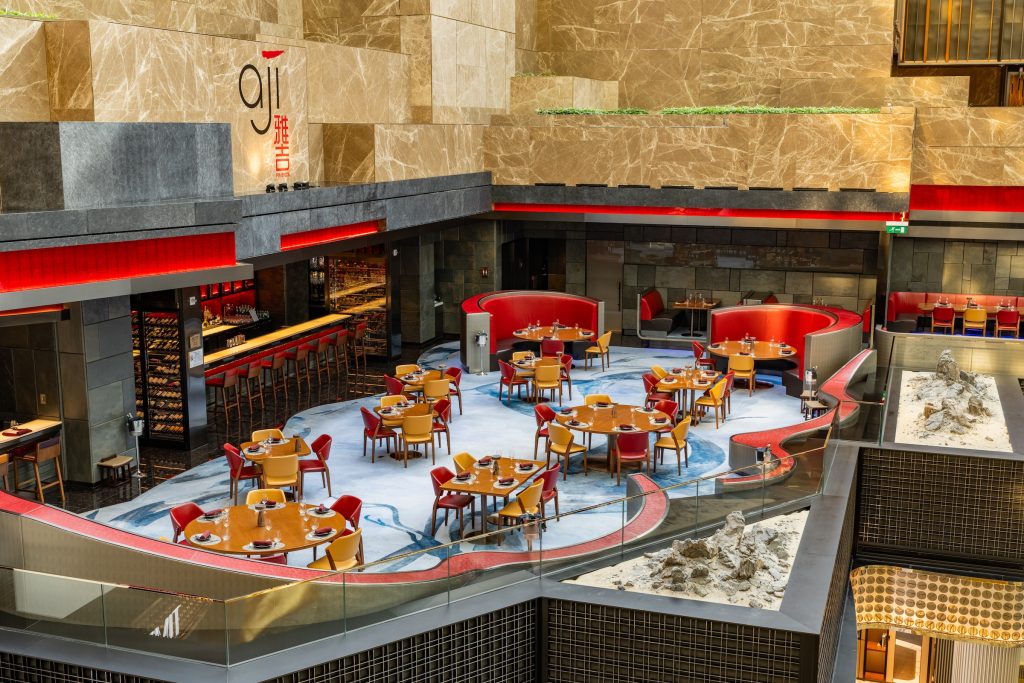
What do you hope guests will take away from their dining experience at Aji?
As a chef, I hope that guests will come to Aji to gain different experiences in terms of taste. I think that is really important because of our creative approach. I’m really glad every time when customers talk to me and say that something they tried is very interesting and they enjoyed it a lot, like they enjoyed the flavours and the dishes that we put out, and when they say that they’ll bring their friends to come back. I think that is the proudest moment, actually.
How has recognition from “Global Delicacy–Excellent Chef Cooking Contest,” Black Pearl Restaurants, the Michelin Guide, and Mingchu China impacted your career?
It’s a morale booster for my culinary approach and philosophy. Because we must have done something right and that’s why people are giving us the recognition. I think it strengthens my belief that what we are doing is something different and, at the same time, enjoyable. Receiving recognition is definitely a good feeling for me and my team. And that is one of the catalysts that makes us strive for even better results to keep up the standards.
What is the significance of the wine and cocktail pairings at Aji?
We don’t have boundaries and say that we have to use Old World wines or New World wines. We’ll pair food together with certain cocktails or even Chinese liquors. I think the most important thing is to find the best beverage that can match with the food so that they can create a different synergy together and enhance the dining experience.
Tell us about the live-cooking counter experience at Aji.
I think the degustation menu that is offered at the counter at Aji truly reflects my own cooking philosophy and my culinary beliefs. I showcase some of my childhood memories from when I was growing up, and some interesting stories of myself. I truly believe that the food that I present to guests—every single dish is something that I really enjoy myself, and is something that I’m proud of putting in front of the customer when I’m serving them.
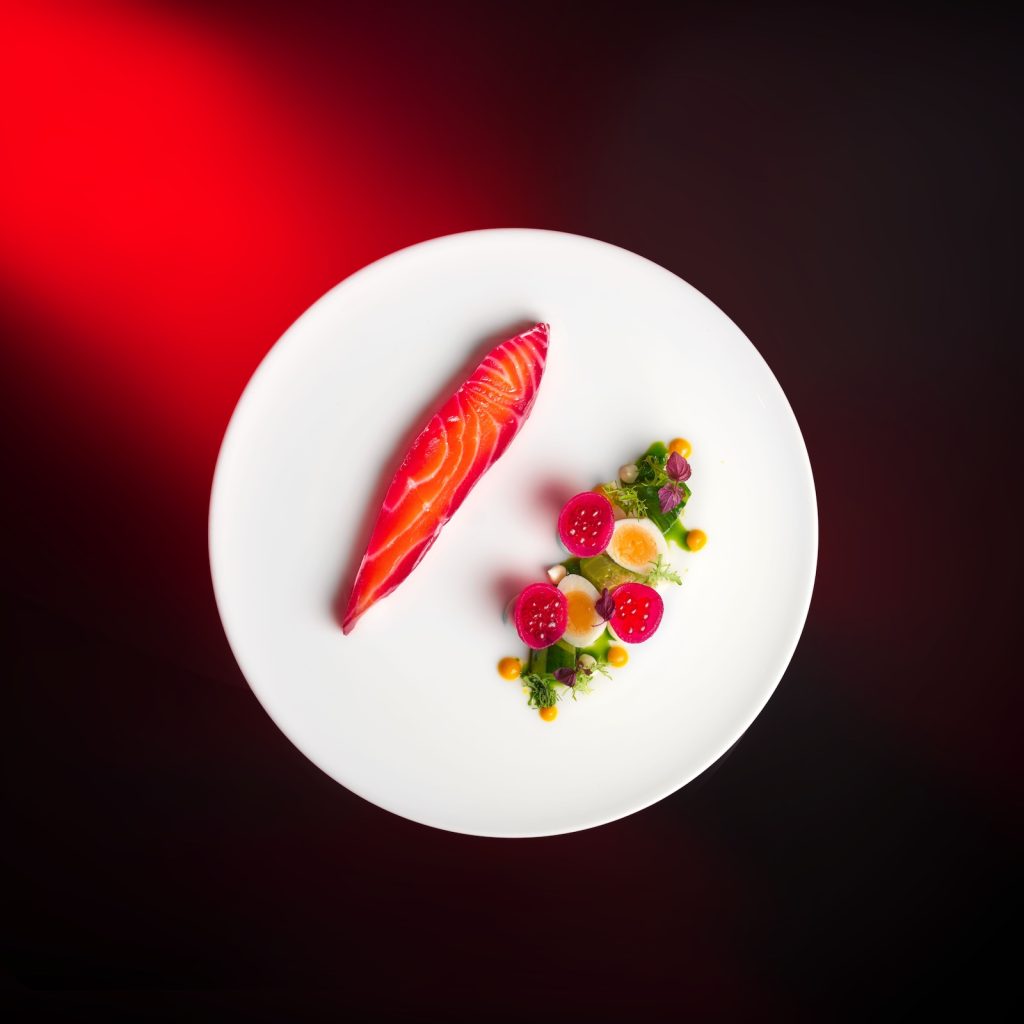
How do you ensure that the natural properties of the ingredients shine through?
First of all, we need to understand the product itself. Sometimes, it’s important to know that certain products react differently to temperatures or acids, or even cooking. I think when we are making a dish, when we have one product, a star product that we want to showcase, we will always try different methods. For example, if we get a really nice abalone, we’ll try to steam it. We will try to create thinly sliced sashimi and see which method is actually the best representation of that product at that particular time. Because you must also understand that different products have different stages and seasons. Langoustine in autumn is good for sashimi, but when it’s wintertime, it’s good for roasting. You must respect each ingredient during that different part of their life, and also what flavours they bring naturally.
MGM x RR1HK Culinary Masters Macau 2025 brings different chefs from all over the world together in one place for an extraordinary gastronomic exchange. What are you most excited about for the event?
What I am really looking forward to this year is working with all the great chefs around the world, understanding their philosophy, and even tasting their dishes—I think that is definitely one of the highlights. I mean, as a chef, to be able to see different masters showcasing their best to the customers is something that I really look forward to. I hope to act like a sponge to absorb whatever I can during the event, and getting to know their team and getting to work with them would be an awesome learning experience. You can pay to go and visit the restaurant and dine in the restaurant, but working with them and seeing them in the back of the house, how they work on their produce, how they react, and how they talk to the team—it’s a one-of-a-kind experience which money cannot buy, right?
What do you hope diners will take away with them after they experience MGM x RR1HK Culinary Masters Macau 2025?
I hope that, through the culinary experience at MGM x RR1HK Culinary Masters Macau 2025, that customers will want to come again and try Aji itself to understand more on my philosophy and the “Asian Bistromony” concept.
And finally, what does luxury mean to you?
I think luxury to me is personal enjoyment. If I enjoy it, I think it’s luxury. It’s something that no one can take away from me. It means the freedom to do what I want and being true to myself. If I’m by the beach with a bit of sunshine and a gin and tonic and I have my own enjoyment, I think that’s luxury to me. It doesn’t have to be everything in this world.
For more delicious details, visit rr1hongkong.com/culinary-masters-2025.





